Engagement, Content Sharing High Among Hispanic Millennials
 This study can help marketers maximize success with in-culture, multicultural segmented efforts and avoid costly cultural gaffes in their mainstream marketing.
This study can help marketers maximize success with in-culture, multicultural segmented efforts and avoid costly cultural gaffes in their mainstream marketing.
What is holding back Hispanic homeownership growth?

The Hispanic homeownership rate of 46.2% for 2017 showed an increase of 0.2% from 2016’s rate, leading Hispanics to become the only demographic to have increased their homeownership rate for the last three consecutive years.
Over the past decade, non-Hispanic whites have lost 1.9 million homeowners and were the only demographic to experience a net loss over this period of time.
The surge in Hispanic homeownership rate can be contributed, in part, to the exploding population growth. Currently the country’s 58.6 million U.S. Hispanics account for more of the population growth than any other demographic.
What’s more, Hispanics accounted for 265,000, or 28.6%, of total U.S. household formations in 2017. Hispanics are even projected to lead U.S. household growth, adding 6 million additional Hispanic households by 2024.
Read more about this interesting article here: https://www.housingwire.com/articles/42626-hispanic-community-continues-to-drive-homeownership-growth
Angelica Noyola Completes 25 Years of Food Service by Reopening Snapper Jack’s Catering
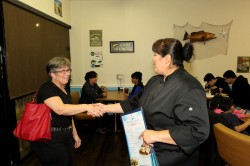
HOUSTON, TX December 6, 2016–In 2007, Angelica Noyola was on top of the world. She was a general manager for one of Houston’s leading iconic Ninfa’s Restaurants.
Her business acumen and available investment capital were the perfect combination to be recruited away to start her dream, a seafood restaurant and catering service she called Snapper Jack’s.
Noyola’s story had all the elements of another rags to riches immigrant story. That eventful day in 1991, she applied on pre-opening at Ninfa’s Restaurant in The Woodlands.
She was excited just to have a job, and it mattered not that her position was washing glasses in the back bar.
Noyola’s work ethic, dedication and willingness to go the extra mile quickly became noticeable to management and she quickly rose through the ranks of the restaurant’s hierarchy.
The retail restaurant business is a competitive, demanding and grueling field, where chaos is managed behind the scenes every day to create a new customer and retain a repeat patron.
In this mix of clientele, employees, equipment, and food preparation, Noyola lost herself in the Zen of the pursuit of superb Tex-Mex cuisine and customer service.
After mastering the restaurant management side, her employer raised the stakes to handle the catering mix of the business simultaneously.
This process is the equivalent of the Olympics of food service due to the compounded risks of things going wrong when a complex operation goes mobile and you have hundreds of customers.
Of course, Noyola used her people skills in conjunction with her obsession for excellence and she always had backup plans when things didn’t turn out as scheduled to pull this challenge off.
With the passage of time, she became an artist at her craft. Week after week corporate and institutional clients requested her product and service. Her business volume and unsolicited accolades were her curriculum that got the attention for her partners, a married couple, who in their own right, were equally successful restaurant owners.
When Noyola accepted the offer to transition and launch her business, there was nothing Ninfa’s management could do to change her mind.
This departure was no longer about income, but about owning her operation and building a legacy for her future generations like Ninfa Rodriguez had done for her family.
So with two loyal employees, a 10-year-old commercial kitchen, and investment capital her rags to riches saga would be washed and rinsed to repeat all over.
The selected business location was in Jersey Village on Highway 290, as this was the only site available on short notice, to service the catering customer base that chose to stay with Noyola.
Through hard work and a commitment to do whatever it takes, the business quickly sped past the start-up phase in a relative short time and into an established company with revenues of over a million dollars a year and an extensive staff.
Once again Noyola was on top of the world and at the top of her game. Things, however, began to take a turn with the expansion of the highway disrupting the traffic flow.
The construction drastically affected the retail side of the restaurant and to make matters worse, Noyola’s married partners decided to divorce and divide the restaurant’s assets.
Noyola’s fairy tale was quickly unraveling into a nightmare, and after a year of negotiations, her partners decided in the winter of 2015 to liquidate the property.
If things couldn’t get any worse, in the processes of shutting down, Noyola discovered that she had no legal ownership in the business. She was just a key employee.
She trusted the verbal agreement of a shared partnership, but she never received a recorded legal claim.
Then came the final blow, Noyola was involved in a severe auto accident that made her bedridden for several months.
As she was going through this, she prayed that this nightmare end so she could wake up. However, with the passage of time reality set in and she plunged into a deep depression.
It was in those dark days that her character coalesced and her destiny defined. An inner voice told her she could do it again and encouraged her to keep going.
She could never go work for anyone after tasting entrepreneurial success, even if was all in her mind. She had obtained a degree and graduated with honors from the school of hard knocks.
She pulled herself out of bed and with mostly grit, she started all over again. In litigating her rights, a judge awarded her the restaurant name as sweat equity for her years of sacrifice.
That name embodied her personal brand and essentially a dream yet to be realized.
In 2016 with a small loan, she rented a tiny restaurant with a small kitchen to rise from the ashes.
She and her husband Fernando quickly cleaned up, painted, and decorated the micro-restaurant to welcome her faithful followers.
Through this process, the adrenaline and excitement lessened the pain she was still feeling from the accident.
The neck brace she wore was a daily reminder to keep her head up and keep going.
That was the easy part but now came the Herculean task of bidding on large catering contracts to large corporate accounts and agencies to win them back after they had moved on.
Overcoming adversity, always learning and a burning passion for never giving up is what now drives Noyola to rebuild her business and leave a legacy behind.
Her inspiration comes from her immediate and extended family. When asked what Mama Ninfa, (as she was affectionately known) would say to her if she was alive? Noyola responded with a conviction of inspiration, “DON’T GIVE UP MIJA!”
Be sure to visit her restaurant for great seafood and tell her I sent you.
America Elects First Marketer President In History
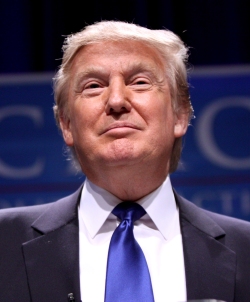
For a truly effective social campaign, a brand needs to embrace the first principles of marketing, which involves brand definition and consistent storytelling. Simon Mainwaring
As the bloodletting and finger pointing continues about the 2016 presidential election, the reality is, we have a new president and a new direction of the country.
American Democracy is a breathing living experiment in governing that continues to be the preferred Dream of immigrants from around the world.
President elect Donald J. Trump is the first marketer in the history of America to win the highest office. Agree or disagree with his politics, policy, business acumen, or ethics he is our leader for the next four years.
Only time will tell what his enduring legacy and footprint he will leave on generations to come.
Behind the scenes, Jose Monterrosa, founder and principal owner of Imagina Communications, a PR and advertising firm that specializes in Hispanic marketing was spot on in his prediction of Mr. Trump’s win.
Can Jose now use his expertise in predicting the next phase of Trump the marketer? What follows is a candid question and answer session in this series that is apolitical and free of ideology from either side of the political spectrum.
V: Jose first congratulations are in order. You accurately forecast Donald Trump would win the primaries and the election. From a marketing perspective, in your opinion what was the winning edge over and above what has been already reported and said?
J: My forecast was based on my marketing experience and cases with similar outcomes, especially in Central and South America with Hugo Chavez. Other colleagues who analyzed Trump’s presidential campaign found similarities with Mussolini and Hitler. Meanwhile others have compared Trump to Ronald Reagan.
Overall, I think his approach made me believe that he was on the winning path despite all the controversy generated during the campaign. These are some of the attributes that gave him a competitive advantage during the Republican nomination race and the general election:
1. He spoke the mind of the “oppressed:” I strongly believe that he spoke the mind of a significant part of the population who feels oppressed by what we know as political correctness. These individuals feel the system has set a “mordaza” (muzzle) on them and restricts their freedom of speech.
Also, based on Donald Trump’s three problem areas of government, these individuals feel oppressed by a system that has not provided opportunities for economic development, have been affected by the escalating healthcare costs and feel unfair treatment as a taxpaying citizen.
2. Risk taker: He dared to say the things other politicians avoided. He was bold, direct in his approach to challenge what is known as the Washington establishment. This obviously resonated with the beliefs of his target market.
3. Winner attitude: I believe he had winner attitude from day one, and he made that clear too despite the criticism. When other candidates played safe, Trump dared to attack with a winner’s bravado.
4. No political liability: Not being a politician gave him a large advantage because he was risk free in terms of a future political career in Washington
5. An outsider voice: Not coming from the established political arena set him apart and that was probably his key differentiator. His business background also gave him this aura of a different and fresh perspective to government challenges
6. An established brand: His years in business, books and a reality show gave him a recognized national and international brand name. This represented a significant advantage in terms of brand awareness
V: Do you think media was complicit in electing Donald Trump by giving him perhaps over three billion in earned free media?
J: Most of the news media misunderstood Donald Trump, and I think they still lack understanding. I would say that during the Republican primaries race the news media played his game in a very amateur way. While he knew what he was doing, they did not. Once he won the Republican nomination, the news media began to see him as a threat and clearly began favoring Hillary Clinton.
A recent article published by the Harvard Business Review (HBR) stated that the media suffered from cognitive bias when covering the election and, ironically, the more they favored Hillary Clinton and the more they attacked Donald Trump, the more his followers were engaged. Per HBR, this is known as “psychological reactance.” Not wasting time, Trump also saw these attacks as an opportunity to build on his brand promise by framing media as part of a “rigged system.”
My interpretation is that the mainstream media ended up empowering the Donald Trump brand.
V: How do you explain the 29% Latino vote?
As previously stated, part of this is explained by the media being cognitive biased towards the Clinton campaign. In other words, mainstream media ignored voluntarily or involuntarily the perception of 1/3 of Latino voters.
One also has to wonder if Latino Trump voters perhaps decided to stay silent fearing alienation from friends and family. A Noticias Telemundo (Spanish TV news network) story that aired the day of the election showed a few voters in that situation.
We also have to question if pollsters used the wrong methodology and the wrong sample.
Despite the above, Latino marketers like me have argued that Latinos are not a homogeneous group as many of our Anglo friends usually conclude. This election has proven that point and businesses should learn from this.
V: Has media and political marketing forever changed? If so why?
J: I think Donald Trump gave his campaign a unique spin but I really doubt that anyone will dare to replicate his approach because it was extremely controversial. What has changed over the last few years is people’s perception of mainstream media. They have lost a lot of credibility according to data from different sources. I wouldn’t be surprised that the perception has deteriorated even more after this election.
Recently, there is a lot of talk about “fake news.” The term is yet to be defined clearly. In the mean time, I would rather describe them as alternative sources of information which to my understanding are simply the result of people losing trust of what should be a reliable source of information.
V: Moving forward what do you think the 70% of Latinos that did not vote for Trump need to consider and be open to accepting?
J: Donald Trump has been all about generating controversy that has played nicely in the ears of his followers. The more anti-Trump Latinos have reacted to his statements, the more they have played his game. My recommendation is to not to fall in that trap again because, as of now, there is no indication that he will stop generating controversy. Sometimes “al enemigo hay que ignorarlo,” (sometimes the enemy should be ignored) as indicated in an article published in Marketing Directo.
As a business owner, I will adhere to the words of a prominent Latino leader in Houston, Texas: it’s time to come together and move forward.
V: Do you think Latino marketing can play a role in advancing Latinos in a trump administration? If so how?
J: None if he doesn’t deliver. So far the country has been at a product pre-launch stage but we all know that no marketing will succeed if the product doesn’t deliver once launched. In marketing terms, the product launch will take place the day of the presidential inauguration. At that point, the clock will be ticking for Donald Trump. He will have to deliver fast at different levels.
In regards to Latinos, his team will have to create achievable programs that specifically target the low-income Latino communities to help them overcome the poverty cycle that a lot of families are immersed in. Stimulating the economy for job creation and focusing on education to defeat poverty will be key among Latinos in Texas, I believe.
V: Any final thoughts?
J: A lot of Latinos in the U.S. like me are immigrants from many countries governed by failed governments. We came here for different reasons but one stands out the most: economic advancement. I do believe that the hope for economic advancement, usually known as the American Dream, is still alive and it’s achievable.
Other ethnic groups have paved the path to follow as we assimilate or acculturate. America is a melting pot and an on-going government experiment because of our race, ideology, religion and gender diversity. The more diverse we are, the more dynamic the government needs to be.
If the experiment doesn’t work for many, we wash rinse and repeat all over again every four years. That fluid political process is what allows us to swing from one side to the next to adapt and find the best practices.
About Victor Escalante: Victor is an author, communications and corporate consultant who has taught advanced communications at five universities and two community colleges. He has two decades of experience in TV, newsprint, radio, and new media. Victor has been a political consultant to candidates in the Texas cities of San Antonio, Houston, and El Paso.
[Image: Creative Commons Gage Skidmore]
As goes Houston so goes Texas and the nation or not
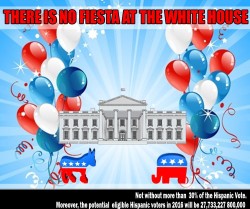
“All Truth passes through three stages. First it is ridiculed. Second it is violently opposed. Third it is accepted as being self-evident” Arthur Schopenhauer
As we wait for the countdown to see who is crowned as the next president, we need to have this frank, unvarnished conversation. Latinos it appears will turn out in record numbers and cast the winning vote for Hillary Clinton or not.
That’s the good news and the bad news for the future of Latinos.
Just as my previous post about Donald Trump was apolitical, this post, likewise puts ideology aside. It is about the future of Hispanics, the majority demographic that will surpass all others in less than three decades.
According to the sociologist professor, Dr. Stephen Klineberg, from The Kinder Institute, a rock star among Latinos and think tanks, “If you shut the borders and no other immigrant gets in, Latinos will be the majority by 2040.” He didn’t just make this up; he’s been saying this for years.
Rather than prognosticating doom and gloom, Dr. Klineberg is bullish on the future of the Greater Houston Area due to the influx of immigrants. Houston has surpassed Los Angeles and New York as the most diverse city in the nation. As goes Houston so goes the nation.
Houston is booming due to the strong economy and the diversity of immigrants. In fact industry is having to import skilled workers to meet the grave shortage.
So while political consultants and politicians were in a mad rush to veer hard right with an anti-immigrant bashing strategy, the Hillary Clinton’s camp saw the same statistical data, and seized the day. Clinton’s team made use of the GOP’s 2012 post-mortem report and the rest is history.
That report clearly outlined a need to be inclusive and bring in more women and minority voters to the base. That fell on deaf ears and instead the GOP circled the wagons and shut out an established Latino voter base of 30% that voted for Governor Abbot. The mantra “Latinos don’t vote” almost became a battle cry.
Latinos were put front and center on the stage, but not for the right reasons. It appeared that it was open season for Hispanics with social media and political rallies hungry for read meat and politicians obliged.
With hindsight, maybe that was a good thing to wake up Latinos to the reality that the only way to make a difference is to engage and vote.
My friends if the sleeping giant finally wakes up hours away, bring out the tequila, it’s fiesta time for a fairer more inclusive policy towards Latinos. It may not happen overnight after all tectonic shifts take time to process and assimilate. But make no mistake about it, change is in the air.
As a political strategist I’m often asked, “Victor why do Latinos vote to the left if they come to America to flee socialist leftist governments in Latin America?” Some argue that it’s the entitlement mentality of government handouts.
While there are some moochers in every demographic including Latinos, we Latinos by far, are hard working loyal people to those loyal to us. To illustrate this, as a kid growing up, I saw images of JFK hand in Latino homes as though he was a saint. Why? He showed good will to the Mexican people and worked with then president Lopez Mateos to improve relations.
It’s hard to vote for a party that has circled the wagons and has no entry path for upward mobile Latinos in the political process.
In this regard, Presidents Obama, George W. Bush, Bill Clinton, and Ronald Reagan opened the door and appointed to their cabinets Latinos to high positions.
I have personally met many of the Latino immigrant business owners that came with nothing. They worked hard and started their own business at a flea market, washing dishes, doing construction work, mowing lawns, etc., to become successful entrepreneurs. This would never be possible in their country. That is the American Dream, a capitalist society, best described by James Adams, who wrote, “The dream of the land in which life should be better and fuller for everyone with the opportunity for each according to ability or achievement.”
The numbers don’t lie Hispanics are the highest indexing demographic in starting small businesses. The ones that rise to the top having businesses with annual billings in the millions tend to be conservative and vote less government intrusion and lower taxes.
This silent minority is too busy running their businesses to waste time to play politics or playing ambassadors for the GOP.
Remember the circling of the wagons? Articulate educated Latinos with a voice disagreeing with the status quo “need not apply” is the unspoken message they hear. Democrats on the other hand started the inclusion of Latinos as far back as the civil rights era. No circled wagons there as Latinos found amigos among Democrats.
Which brings me to the opening bad news in my post, Latinos per capita are the least educated to fill top earning positions in management and industry. Policy makers need to think decades into the future. That’s what Ronald Reagan and JFK did.
A lack of investment in education for Latinos now, will translate into billions of dollars in a shortfall in taxes to pay for social security and municipal budgets. Let me be clear, Latinos will need to do the economic heavy lifting in the future. If we don’t Latinos earning minimum wage will not be able to sustain the enormous shortfall in the tax base.
We Latinos need to do our part and prepare the majority of our youth, for college and certificate degrees in the trades. In this area there is hope, the trends show more Latinos are graduating with college degrees. Though Latinos leaders see the urgency; however, without the economic infrastructure, what good is it to get a certificate degree in a trade if there are no jobs?
If Hillary Clinton wins, Latinos will need to have their wish list in their back pocket and pull it out at every opportunity they can. In one study Latinos want in this order:
1. Jobs
2. Education for their children
3. Affordable health care (not Obamacare)
4. Immigration reform, and
5. Safe communities
I’m not talking the E word here. Latinos do not want handouts or “entitlements” but a hand up to create an upward mobility strategy to contribute and gain in a bigger way. Is this any different than the working class Trump coalesced into a passionate army? Except for immigration reform, no. The majority of undocumented immigrants are close or immediate relatives of the new bloc of Latino voters. Millennials who hate their loved ones marginalized as subhuman criminals.
Latinos have turned out in record numbers out of fear for the rhetoric from the extremist right. We marketers saw it for what it was, a tactical messaging to solidify the base. That unified Latino vote that may save Hillary could evaporate, if no serious policy and inclusion are drafted to make Latinos feel part of the process.
The Clinton administration was responsible in a large way for displacing the jobs of the working class that Donald Trump turned into his base. This displacement was done with an over emphasis on a college education.
We can see how that turned out. Currently, we have many unemployed college degreed millennials who cannot find a job in their field.
Regardless of whom wins the White House, there will be some bloodletting and lots of finger pointing. The problems will still be there to address. It is high time we shake hands and be friends online and in real life to work together and have the uncomfortable discussions that lead to meaningful change, not meanness.
What a wild ride this cycle has been. Unbuckle yourselves and now let’s have a fiesta
Victor Escalante is an author, communications consultant, political strategist, and corporate consultant based out of Houston, Texas.
[Image: Victor Escalante]
The road to the White House runs through Latinolandia or not
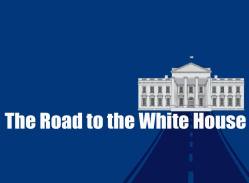
Houston, TX November 5, 2016- As of this writing we are four days away from a historic election that will dramatically affect our lives for decades to come. In the past the presidential candidate who won at least 30% of the Hispanic vote became president.
However, that was based on the traditional blocks of voters who turned out to vote. After the 2012 election, the GOP commissioned an autopsy report.
One of the key points was that the party needed to grow the minority base by doing outreach work. Politics aside and strictly from a marketing and advertising perspective I’ve had many discussions with peers in my field.
As a long-time media veteran and marketer, I’ve followed the process since the primaries. One thing we can all agree on is that this election cycle is nothing like we have seen in our nation’s history. Politics will never be the same.
Radical change in traditional media is one of the byproducts of candidates blowing up the old model. This cycle we saw the emergence of Twitter, blogs and social media content upend breaking news from traditional news networks.
In many ways, it was the perfect storm for many entities and institutions. Many books and documentaries will come out of this and students will study lessons learned akin to such great works as, “The Art of War.”
I bring you this insightful interview from one of those minds which works in the advertising and marketing field. Jose Monterrosa of Imagina Communications in Houston, Texas has followed the tactical moves of both candidates as though it was the FIFA World Cup.
Since this blog is about Hispanic Marketing. We have tightly framed the discussion within that context. Our aim is to pull the curtain and have an academic conversation.
I reiterate, this discussion is about tactical strategies, not an ideology which we will leave to the noisy talking heads.
V: Up to now, has Donald Trump executed a winning strategy? If you think, he has. As a marketer, if you were advising a political client or group what elements can you isolate to his success?
J: We will know if it’s a winning strategy until Nov. 8. My perception is that he has run a unique campaign by US standards which are usually, soft talk, kissing babies with a smile in public and punches on the side. So far Trump has been very direct and very aggressive.
The most important item of his campaign so far, in my view, has been the simplicity and consistency in the main message and brand promise which we recognize as Make America Great Again. If you look on the Clinton side, it’s hard to recall what her main message is or has been.
Single messages and brand promises are important because they are that external expression that makes it very clear to people, in a very cluttered and noisy media environment, what the brand stands for and what it will do for you no matter what the adversary is trying to say about you.
The single message also positions your brand to that choice set in the mind of voters. Now, that single message and brand promise can’t stand alone; they need to be supported with what we know in our industry as the Reasons To Believe. I think that the Trump campaign has been very flexible and tactical about those reasons to believe. RTBs have been his ammunition all along.
V: Have you ever seen this type of loyal base of voters for a presidential candidate in Latin America? Why do you think they are so loyal to a candidate such as Donald Trump? I have never seen a Teflon candidate as Donald Trump.
J: I strongly believe that Trump has a lot of similarities with the brand personality of the now deceased, Hugo Chavez from Venezuela when he was president. Hugo Chavez was bold, aggressive and extremely controversial.
Like it or not, Chavez was a strong leader who reached high levels of popularity and unpopularity far beyond Venezuela. The trick is that he knew how to manage the news media but more importantly, how to keep them engaged and focused on him.
Trump has done the same thing, especially when he was running for the Republican nomination. For the presidential election, he has been challenged many times by the Clinton team which I consider to be masters of managing the news media too but with a different style so this has been a clash of titans if you want to see it that way.
In regards to loyalty, no product or service can survive if there is no need for it. Again, like it or not, we have to acknowledge that there is a large part of the U.S. population who do not identify with the ideals of the Democratic Party nor the policies implemented by the Executive.
There is a lot of anger. Anyone that analyzes this can see that Trump followers feel marginalized and forgotten by the status quo in D.C. too. Trump has targeted them, and it is my impression that his followers see him as their last chance to change things.
V: Do you think his damage control has been successful? If not, where do you say he has faltered and as a PR and Marketing Executive how would have you advised it be handled differently?
J: I think the Trump team is careless about damage control. They are probably too busy trying to catch up with Trump or planning his next news media controversy because, as you have heard in the past, the best defense is to attack.
One of the core rules for engaging clients in our industry is their willingness to listen and follow the advice of their consultants. I don’t think Trump is that person, so there is no need for me to provide him advice, honestly.
V: Trump has attempted to court the Latino Vote, and he has some loyal followers. This is caused a division with family and friends. Talk about what you have observed.
J: Quite the opposite, I think. Trump has not courted the Latino vote. He has used Latinos, specifically those that are here undocumented, as his scapegoat to court his followers.
To be fair, putting the blame on others has been a very effective tactic for people in politics for decades. Hugo Chavez was excellent at blaming the rich and the U.S. for the problems of the poor in Latin America. Bernie Sanders and Hillary Clinton have put the blame on Wall Street for the income inequality issues in this country.
There is no such thing as having a pleasant conversation when you talk about politics. The current levels of internal ideological polarization make those conversations even worse. It’s sad to see friends and families divided over matters related to politics.
V: What should have been done in your opinion to expand the Latino vote or other segments he needs to win?
J: He should not have begun his political campaign by pointing the finger to the “Mexicans” in the first place. His statement was a news media bombshell that set the tone of his campaign and his strategy.
I believe that those like me that are Latinos and work in the marketing industry did not take it personal because we knew where he was going but to the average Latino family, his comments were extremely offensive.
The anger and the resentment is there in our community, and it will take years to repair if there is any interest in repairing it. This resentment has naturally spilled over to the Republican Party brand.
V: Who do you forecast will win on Nov. 8?
J: Trump is a very tactical guy which gives him the flexibility to be unpredictable and maneuver at his discretion in the political environment.
I think that the last three days before election day will be critical for him assuming that he does not want to give the Clinton campaign team time to react; however, the Clinton team may be thinking the same way. They know how to play this game too.
Hopefully, this craziness will end next week, and this country will choose a leader that can bring people together.
V: Any other closing remarks?
J: Hispanics will make history on November 8. On the other side of that significant day, we need to focus on what is truly important such as education, business development, engagement and the like. The browning of America presents challenges and opportunities it’s up to us to chart our destiny.
[Image: Victor Escalante]
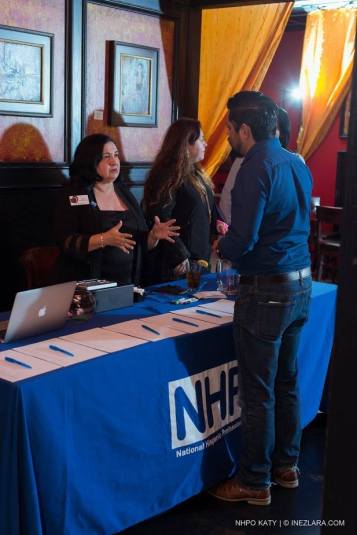 Katy is known for three things; a highly rated school district, shopping at Katy Mills Mall and one of the fastest growing chapters of the National Hispanic Professional Organization (NHPO). The chapter launched in January 2016 by former NHPO Houston Board Member Leah Martinez and her husband Monty Ortiz, owners of Brand-Aid Consulting, a branding company. According to Martinez, “We wanted to bring the culture of the NHPO group to Katy, where there was a need for a good group of networkers due to the exponential growth seen in Katy, TX.”
Katy is known for three things; a highly rated school district, shopping at Katy Mills Mall and one of the fastest growing chapters of the National Hispanic Professional Organization (NHPO). The chapter launched in January 2016 by former NHPO Houston Board Member Leah Martinez and her husband Monty Ortiz, owners of Brand-Aid Consulting, a branding company. According to Martinez, “We wanted to bring the culture of the NHPO group to Katy, where there was a need for a good group of networkers due to the exponential growth seen in Katy, TX.”
The networking group has passed an important benchmark of over 100 active and engaged members in ten months. NHPO-Katy now has a full working board in charge of putting on monthly mixers, a free “Weekly Breakfast Roundtable,” networking meet up at Bullritos Katy, as well as and charitable fundraisers that benefit local charities. Their recent fundraiser, “NHPO Katy Yappy Hour” raised over $1,000 for Special Pals Animal Shelter.
According to census figures, Katy has a 29% Hispanic demographic and NHPO-Katy is aggressively targeting small and large businesses to join at the corporate membership level. Currently, approximately 60% of membership is Hispanic with 20 of the 103 members Business Members. Branding expert, Ortiz, explains why businesses should get onboard, “We leverage a business online and community footprint by giving them exposure that leads to Business Development and business leads, plus they help the mission of NHPO. Furthermore, their membership is reciprocal to all other Texas Chapters.”
A board member and staunch supporter of the group, Albert Perez, NFLB, claims to meet 2-4 new people every week. He says he has developed relationships with about 40% of the people he meets.
When asked what they attribute their fast growth of highly committed members, Martinez, related, “We are a member-centric organization that focuses on putting our members first. We have a hard working board that practices a “Servant Leadership” philosophy. On top of that, we support our community paying it forward by giving to local charities. The group is planning their First Annual Sporting Clays Tournament in February to benefit the Lone Star Veterans Association.
NHPO-Katy wants to invite all to attend their October networking event that is slated be the largest to date, with Prospect Mortgage as the sponsor. This month’s event will be free and open to all, at Agave Rio Restaurant and Patio Oasis, 1138 FM 1463 Katy, TX 77494 on October 27, 2016 from 6 p.m. to 9 p.m. For more information visit them at http://www.nhpokaty.org/ and htps://www.facebook.com/groups/nhpokaty.
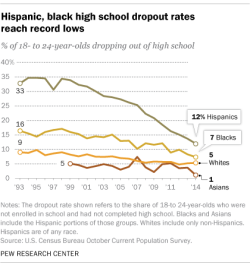
In a 2014 National Journal poll, 66% of Hispanics who got a job or entered the military directly after high school cited the need to help support their family as a reason for not enrolling in college, compared with 39% of whites.
Here are five facts about U.S. Latinos and education:
- Over the past decade, the Hispanic high school dropout rate has dropped dramatically.
- Hispanics are making big inroads in college enrollment. In 2014, 35% of Hispanics ages 18 to 24 were enrolled in a two- or four-year college, up from 22% in 1993 – a 13-percentage-point increase.
- Even though more Hispanics are getting a postsecondary education than ever before, Hispanics still lag other groups in obtaining a four-year degree.
- Another reason why Hispanics lag in bachelor’s degrees is that nearly half who go to college attend a public two-year school, or community college, the highest share of any race or ethnicity.
- Hispanics are significantly less likely than other groups to have student debt.
Read more about this research results here: http://www.pewresearch.org/fact-tank/2016/07/28/5-facts-about-latinos-and-education/?platform=hootsuite
Hispanic Houston Summit 2016
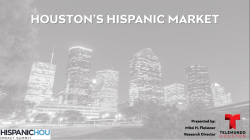
The Houston Hispanic Chamber of Commerce recently held the Hispanic Houston Summit 2016. This event was sponsored by Telemundo Houston and it highlighted key Hispanic consumer data for our city. These is some of the info shared:
- Behind Los Angeles and New York, Houston is the third largest Hispanic city in the country
- 76% of Houston Latinos live in Harris County
- Hispanics are driving population growth in Houston
- Hispanic median age in Houston is 28. Total median age is 35
- 57% of Hispanic adults have one or more children in their home
Feel free to download a copy of the report presented by Telemundo Houston at http://www.houstonhispanicchamber.com/assets/docs/2016HispanicHoustonImpactSummitData.pdf
In the US, Minority Babies Are in the Minority No Longer
Back in the late 1990s it was hard to see Latinos being the dominant race inside the classrooms in the local colleges and universities but now that has shifted completely. Today Latinos dominate some, if not most, college campuses in the Houston DMA and according to the data from the Pew Research Center that will continue to be the case at least in Hispanic dominant cities such as Houston
Read: In the US, Minority Babies Are in the Minority No Longer